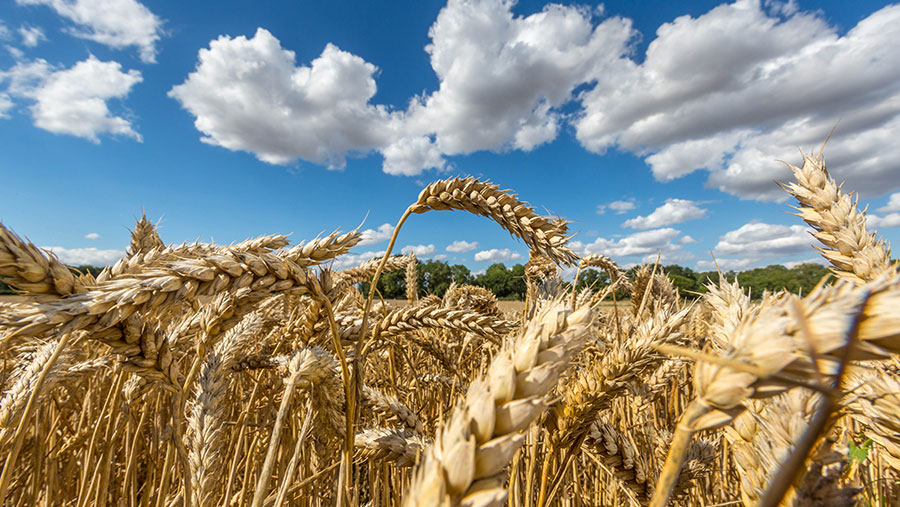Trade terms, subsidies and demand cloud arable outlook
 © Tim Scrivener
© Tim Scrivener The arable sector is expected to be among the hardest hit by the reduction in subsidy as the UK leaves the CAP regime, says David Eudall, head of arable market specialists at the AHDB.
In a series of longer-term outlooks published this week by the levy board, he highlights the main issues facing the sector.
See also: Arable finances: What to consider after tough winter
Future support
The balance between crop production on marginal land and environmental schemes will be key in ensuring a consistent domestic production, he says, warning that any future environmental scheme will only offer some income to offset the loss of subsidy.
“If the environmental schemes are too supportive, more land will move out of production. If they are not supportive enough, unprofitable marginal land will continue to be used and arable businesses may suffer from high costs and variable yields.”
Market update
Weaker sterling and several crop reports kept wheat and oilseed rape prices relatively firm this week.
The ex-farm July feed wheat price averaged £157.23/t midweek, with traders warning that while the UK crop would be a small one in relative terms, there is plenty of wheat elsewhere.
Oilseed rape for July movement averaged £322.70/t ex-farm, up about £1 on the previous week.
The EU Commission reduced its estimate for the EU wheat crop by 4.3m tonnes, to 117.2m tonnes. It left its barley forecast stable at 56.1m tonnes, while the European maize crop estimate was raised by 0.5m tonnes to 71.9m tonnes.
Reflecting the smaller acreages due to flea beetle and weather damage, the EU rapeseed crop was also revised lower to 15.4m tonnes, compared with 16.9m in 2019 and 20m in 2018.
While US corn and soya futures were helped by Monday’s crop area reports from the US Department of Agriculture, these markets are also being negatively affected by the high levels of coronavirus cases being recorded in the US.
Trade policy risks
The combination of a liberalised trade policy for cereals and oilseeds alongside the loss of marginal land into environmental schemes risks losing output. There could be further market consolidation in potatoes and more variable weather would exacerbate the loss of output overall.
Uncertainty over trade arrangements raises the question of whether the UK will rely on more imports of grain and processed potatoes or raise efficiency to increase production to consistently meet domestic demand.
If losing direct subsidies is a “eureka moment” for domestic arable markets, driving efficiency through higher prices and a more competitive integrated supply chain, then there may have to be short-term pain to see those efficiencies in future, warns Mr Eudall.
Grains and tariffs
The reduction of maize import tariffs to 0% in the UK’s recently proposed global tariff schedule produces its own issues, he says.
“The main discussion in the industry is around maize imports, and the threat from GMO maize undercutting our own market prices. While a hypothetical risk at this stage, a more open trade policy does raise a question about how a new globalised international trade will affect the UK market.”
One option is to try to increase grain production to create a surplus to export in order to stop imports. But this would then mean the UK price has to compete with the lowest common denominator in a grain world dominated by Black Sea exports, which simply leads to cheaper ex-farm prices, he says.
“Or, if we have a domestic deficit, we are then at import parity and so prices are supported. But in a liberalised trade policy, we place our market at the risk of imports undercutting the UK marketplace and material coming into the UK grown to different standards.”
Climate change influence
While climate change brings production risks, consumer attitudes regarding the issue may increase demand for plant-based products, possibly underpinning demand for cereals, suggests the report.
